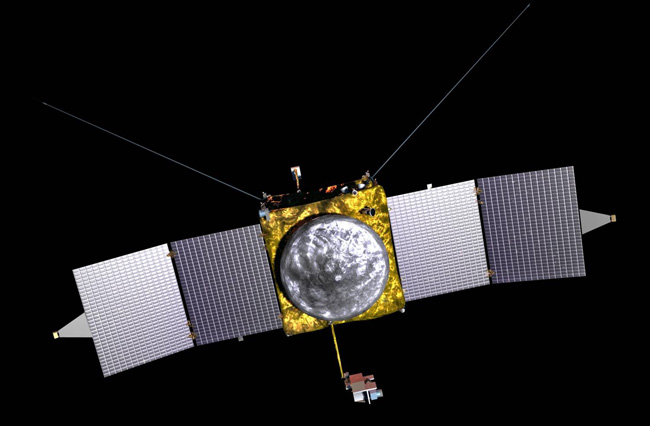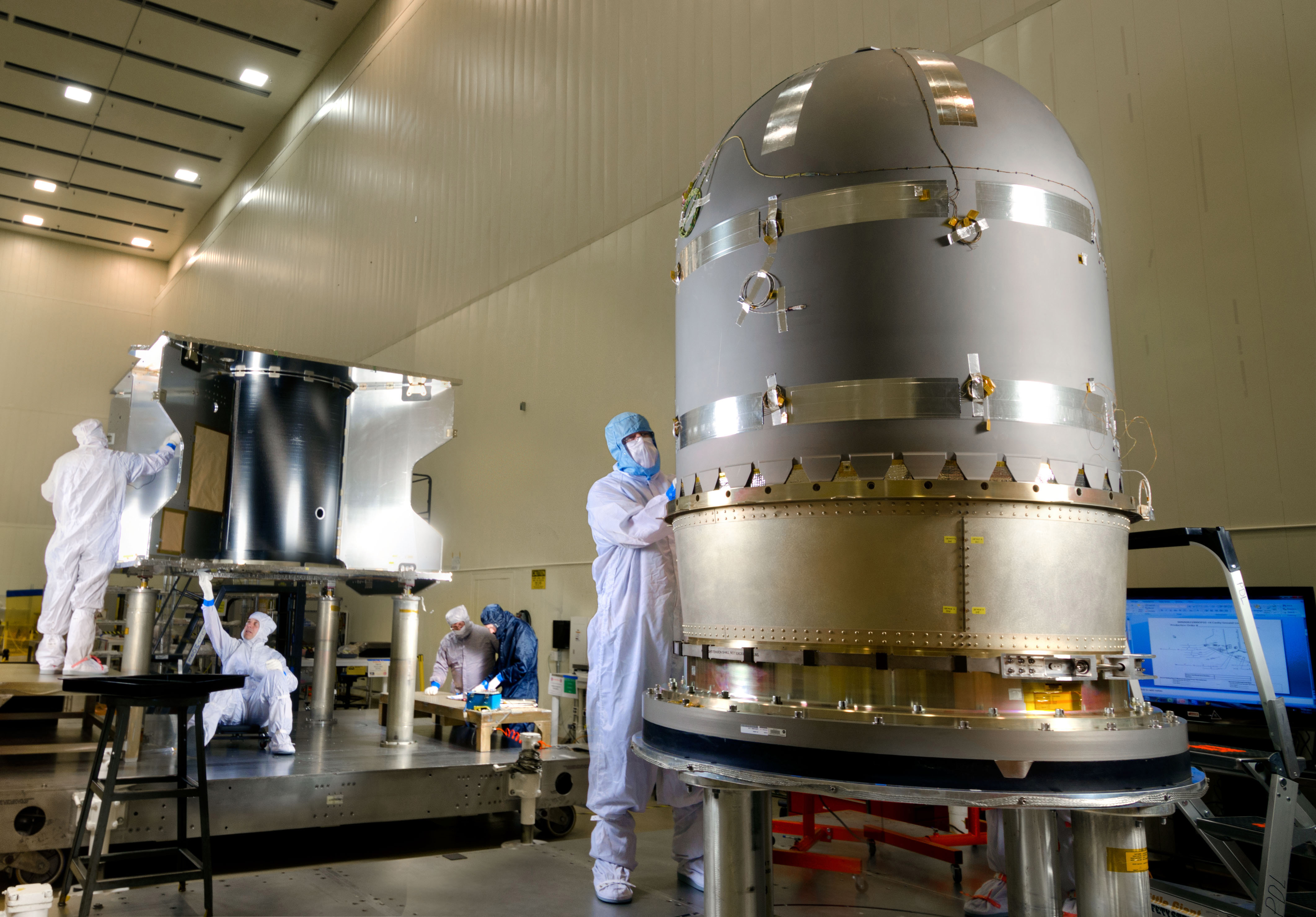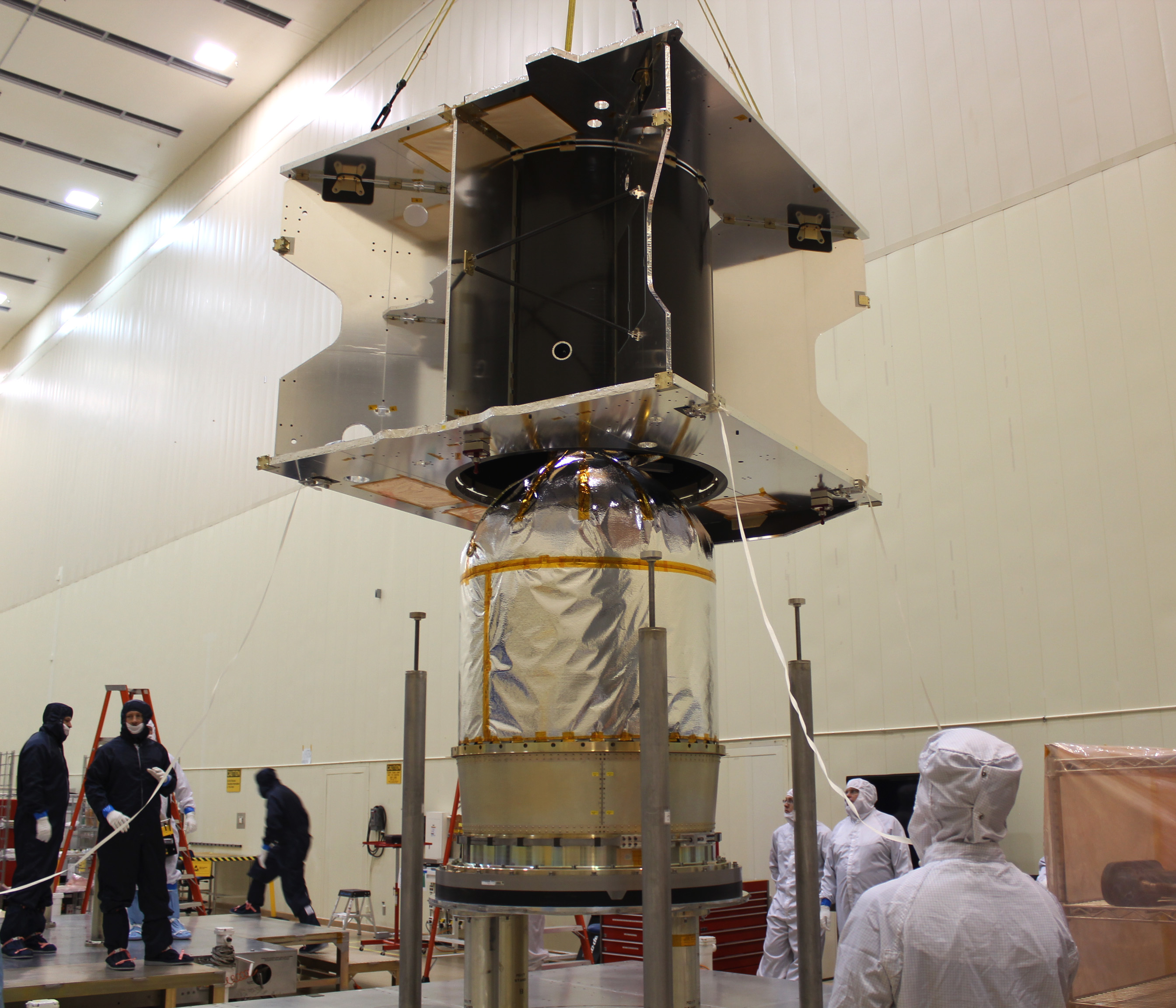NASA's Next Mars Probe to Spy on Red Planet from Above

This story was updated at 3:52 p.m. EDT on May 23.
Inside an ultraclean facility in the foothills of the Rocky Mountains, engineers are constructing NASA's next Mars-bound spacecraft.
The Mars Atmosphere And Volatile EvolutioN (MAVEN) spacecraft is being assembled by Lockheed Martin at their Space Systems Company facilities near Denver. The spacecraft's core structure and propellant tank were recently installed in a clean room, which protects the various components against contamination.
"MAVEN is just starting to come together in the clean room," James Crocker, Lockheed Martin's vice president and general manager for sensing and exploration systems, told reporters during a recent site tour here.
The large tank is more than 6 feet tall (1.83 meters), and is designed to hold 450 gallons of toxic hydrazine propellant.

Some of that fuel will be used to properly position the robotic spacecraft after it is captured into orbit around the Red Planet. A series of rocket-motor burns will be used to lower MAVEN into its so-called science orbit.
The MAVEN mission will be the first to investigate Mars' upper atmosphere, in an attempt to understand what caused the Martian atmosphere to be lost into space. The spacecraft will also collect observations to help scientists piece together how this atmospheric loss has affected the planet's climate over time. [7 Biggest Mysteries of Mars]
Get the Space.com Newsletter
Breaking space news, the latest updates on rocket launches, skywatching events and more!
The $670 million mission is scheduled to launch in November 2013, and will reach Mars in 2014.
"MAVEN is trying to understand what happened to the atmosphere," Crocker said. "Where did it go? It will help us understand how the gases in the atmosphere escape Mars."
MAVEN will examine how much atmospheric gas is escaping into space, Lockheed Martin officials said. Once the current rate of atmospheric loss is determined, scientists can then use these figures to paint a picture of what occurred in the past.
These measurements will help researchers see how the Martian climate has become increasingly inhospitable to life, NASA officials have said.

So far, work on the MAVEN spacecraft has been on budget and on schedule, Lockheed Martin officials said. The spacecraft is expected to be delivered to NASA's Kennedy Space Center in Cape Canaveral, Fla. next August.
Meanwhile, NASA is preparing to land the Mars Science Laboratory, or Curiosity rover, on the surface of the Red Planet this August. The $2.5 billion rover mission will investigate whether Mars is, or ever was, hospitable.
The Mars Science Laboratory and MAVEN are the only Mars missions currently scheduled to launch to or land on the Red Planet in the upcoming years. NASA recently announced an overhaul of its Mars exploration strategy, after the agency was forced to pull out of two European-led missions due to budgetary constraints.
You can follow SPACE.com staff writer Denise Chow on Twitter @denisechow. Follow SPACE.com for the latest in space science and exploration news on Twitter @Spacedotcom and on Facebook.
Join our Space Forums to keep talking space on the latest missions, night sky and more! And if you have a news tip, correction or comment, let us know at: community@space.com.

Denise Chow is a former Space.com staff writer who then worked as assistant managing editor at Live Science before moving to NBC News as a science reporter, where she focuses on general science and climate change. She spent two years with Space.com, writing about rocket launches and covering NASA's final three space shuttle missions, before joining the Live Science team in 2013. A Canadian transplant, Denise has a bachelor's degree from the University of Toronto, and a master's degree in journalism from New York University. At NBC News, Denise covers general science and climate change.









